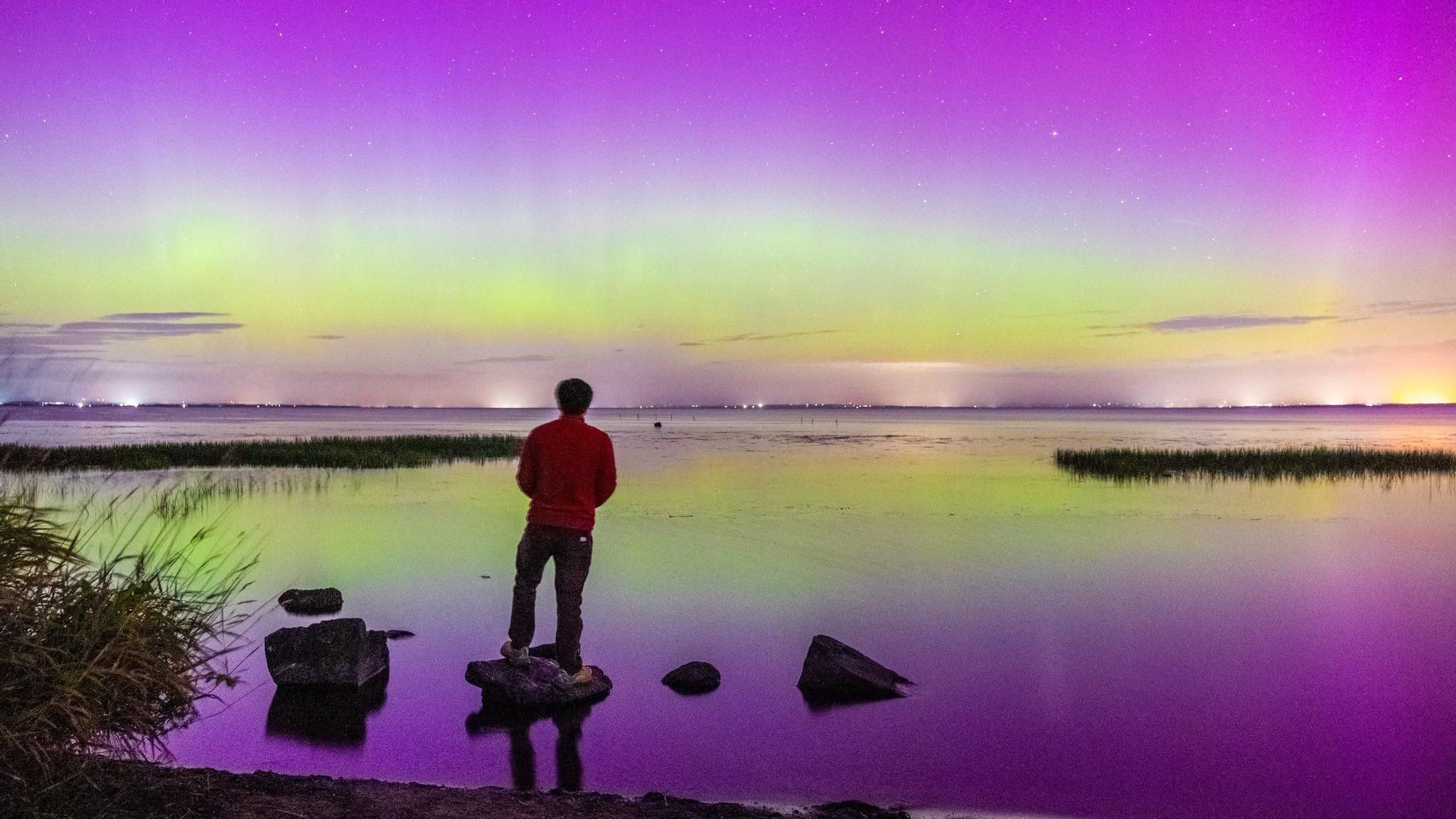Northern Lights: Spectacular display lights up Irish skies

Photo collection Leave photo collection
Picture credits to Sharon Cuatriz
Captured by Sharon Cuatriz, this image displays the Aurora Borealis above Derrytrasna, in County Armagh.

The Aurora Borealis illuminated the skies of Northern Ireland on Monday night before the arrival of clouds and rain.
The pictures taken by weather watchers around the country capture the stunning display of lights known as the Northern Lights.
The weather will clear up overnight on Tuesday, but the activity is forecasted to decrease throughout the day.
Because the UK is located below the natural aurora belt, which is typically seen in Norway, Iceland, and Greenland, it requires a powerful geomagnetic storm to push the belt further south and directly over the UK.
The KP index, which indicates how powerful the aurora is, is expected to decrease this morning and stay at a level of three or four throughout the night, falling below the strength of a G1 geomagnetic storm.
On the other hand, the KP value increased to approximately six last night.
The bigger the KP number, the more likely you are to see an aurora, as long as the sky is not covered by clouds.
What Makes The Northern Lights Appear?
The Aurora Borealis can be seen as vibrant, swirling curtains of light in the nighttime sky, coming in hues of green, pink, and red.
This happens when particles from the sun collide with gases in the Earth's atmosphere.
The colors appear because various gases in the Earth's atmosphere are being energized by charged particles.
The Earth's atmosphere is mainly made up of nitrogen and oxygen gases. Oxygen atoms produce a green glow, the color commonly seen in the Northern Lights, while nitrogen atoms give off purple, blue, and pink hues.
The most breathtaking light displays happen when the Sun releases huge bursts of particles known as coronal mass ejections.









































